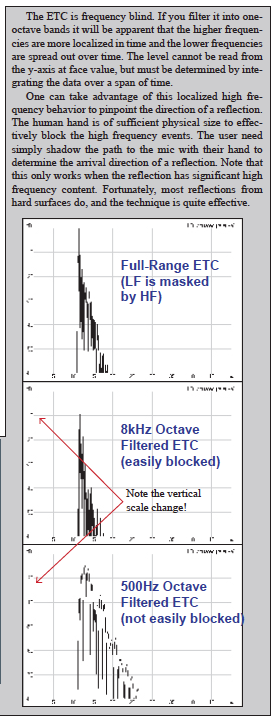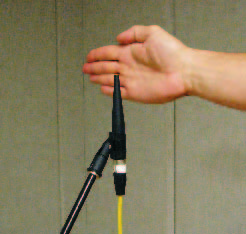How to determine a reflection's direction without Polar ETC
By Dale Shirk
Dale Shirk gives you a couple of practical ways to determine where the reflections originates without using a Polar ETC.
Although it’s often easy to hear where a reflection is coming from by playing a pulsed signal and cupping your hand to your ears, sometimes it’s necessary to employ measurement systems to do it. Looking at an ETC or a log-squared impulse response, we can see a reflection as a spike that sticks out above the reverberation decay.
Place the cursor on the spike and note the arrival time, or set that time as a reference for difference measurements. Now move the mic a small distance, say 6 inches, in the direction you think the reflection is coming from. Take another measurement. If the reflection is earlier in time, you’ve moved towards it. If it is later in time, you’ve moved away from it. If it didn’t change much, you’ve moved sideways across it.
Try another direction and see which way the reflection moves. Also try moving the mic up or down. A lateral reflection from a side wall won’t change much, but a ceiling reflection will change a lot. Also be sure you are looking at absolute time units, not time relative to the direct arrival. The direct arrival will be moving around as well.
Another way to determine arrival direction is to block the microphone’s view in a certain direction with a sound absorbent barrier, such as a sheet of Sonex. When you block the offending reflection it’s spike will go away (see sidebar). ds


